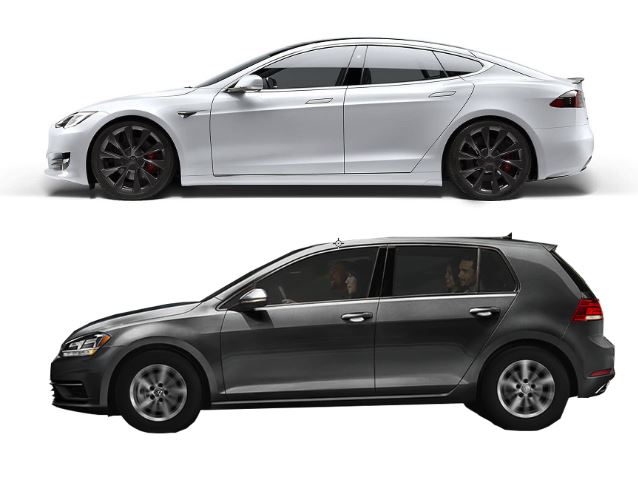Contained within the SEAI 2016 report (latest statistics) titled CO2 Emissions from Fuel Combustion we see that the intensity of CO2 emissions in electricity generation was 468 gCO2/kWh. In other words, for every kilowatt-hour of electricity generated, there was an equivalent amount of CO2 produced (468 grammes).
If you fully charged your Tesla Model S 100D it will have a range of 300 miles (480 km) in ideal conditions. That means, it takes about 110 kilowatt hours to fully charge which in turn means there is an environmental hit of 468 x 110 = 51.48 kg of CO2. Breaking this down a bit further it means that our electric car “produces” 107 grams of CO2 for every kilometre driven.
Take a very popular car in Ireland – the Golf 5 door 1.6 DSG TDI Highline. It’s got 115hp and it produces 105g/km.
So, with those very rough figures it can be seen (surprisingly) that the Golf diesel is cleaner than the electric car – not a whole lot cleaner, but cleaner nonetheless. The argument of course exists as to how accurate the Volkswagen figures are when compared to real-world driving, but the same could be said in relation to the Tesla.
It would be nice to say that in the future it would be likely that electricity will become cleaner, but from 2014 to 2015 there was an uptick in the CO2 produced per kWh, so let’s hope that the pickup in the economy is not going to result in dirtier electricity. Let’s hope too that Brexit isn’t going to force us to start using coal again or extending the use of peat.
If you see any glaring mistakes, please add to the conversation and I’ll update as we go. Also, if there are any Irish Tesla drivers out there, we would love to hear about your own experiences regarding driving range.
How much cleaner would a hydrogen car be? More on that next week 🙂

